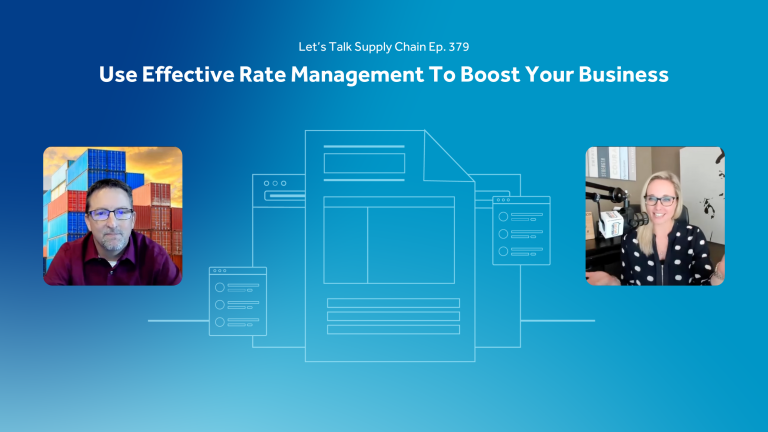Dynamic pricing, where businesses set flexible prices for products or services based on current market demands, has existed throughout much of human history, but it hasn’t traditionally played a large role throughout the intermodal industry
Could that change in the future? If so, how could and would this affect the intermodal industry as a whole, as well as the various modes that make up the industry?
Intermodal Insights reached out to several experts for their perspectives. Among them: Tom Burke, the CEO and founder of intermodal drayage rate management system, Draymaster. Burke said that the benefits of dynamic pricing in intermodal are several, including that it provides an opportunity to manage capacity peaks and valleys in a more efficient manner; that it takes the human emotion out of pricing decisions; and that drayage carriers can get a higher price when capacity is tight, and can lower their price to get business when capacity is plentiful.
“Most dynamic pricing models will show that the average price will increase over a period of time when using a well-designed model – if it didn’t, airlines and hotels would have scrapped this concept over a decade ago,” he said. “Money is being left on the table when not using dynamic pricing.”
“When capacity is plentiful, a drayage carrier would rather keep an owner-operator moving at a price closer to their cost than to not have business to keep that truck’s wheels turning,” he continued. “When this happens, owner-operators start jumping ship and moving to companies where they think they will get more moves. This ends up costing the trucking company and the owner-operator a significant amount of money and time.”
Another benefit, he said, is that it would eliminate phone calls and emails inquiring about capacity, since dynamic pricing would not show availability if the trucking company was booked.
Todd Tranausky, vice president of rail and intermodal for transportation intelligence company FTR, added that dynamic pricing benefits the market by allowing it to respond faster to changes in demand.
“Instead of waiting for month end or contract renewal season, in a dynamic pricing environment, rates could change quickly to match demand,” he explained. “It would allow every link in the intermodal chain to respond to the pressures they are seeing in the system. And it could allow them to achieve better capacity utilization as they could use rate to more quickly encourage volumes to fill available capacity.”
In a written response it provided to Intermodal Insights, Quick Transport Solutions Inc., a technology company serving the transportation and logistics industries, also detailed another reason why dynamic pricing benefits intermodal: because it’s poised to take advantage of a future of high-tech automation.
“Machine learning will likely be used to manage these models in the future,” the company, which provides information on trucking companies, said in its statement. “Additionally, for the customer, they can usually take advantage of cheaper rates provided it is not a rush shipment.”
Potential Drawbacks
Regarding if there are drawbacks to this type of pricing, Tranausky said there are, and that they can cut both ways depending on which way the market is moving at any given moment in time.
“In a rising market, shippers are going to feel the effects of price increases more quickly than they otherwise would,” he said. “Conversely, in a declining market, carriers are going to have to react more quickly, lowering rates to keep the business.”
Todd Davis, vice president of intermodal for KLLM Transport Services, said that one snag is having to compete with spot truckload rates.
“I think that perhaps we can look at average pricing for lanes, especially in high volume lanes, high capacity lanes, that would resolve losing intermodal freight to highway providers when certain seasonalities are occurring in different geographies. I do think that that type of change would be impactful for intermodal providers.”
Quick Transport Solutions stated that another possible drawback is that dynamic pricing provides a way for those who are not transparent to overcharge their customers.
“This is possible because dynamic pricing is complex by nature. Carriers need to go out of their way to make sure their customers aren’t caught off guard by pricing changes,” the tech company explained. “Also, carriers need to ensure they set up their dynamic pricing models to scale. These are complex models, so they must ensure as they grow, they aren’t overwhelmed.”
Domestic & International
Burke said that both domestic and international could benefit from dynamic pricing because the process would automatically adjust pricing based on multiple different factors providing all participants the opportunity to realize a fair price.
“Today, it is difficult to tell a customer that their load is going to cost $1,000 because you have limited capacity left when you normally charge $800; however, that same customer is very accustomed to paying a different rate on an airline or hotel based on capacity, lead time, and other factors,” he said. “Once dynamic pricing is introduced and it is understood and accepted, everyone will realize that you pay more when capacity is tight, and less when it is plentiful, but when it all washes out, the average price that you pay will typically be very close to the $800 you are used to paying all year long.”
“We see more spot market and dynamic pricing on intermodal than we’ve ever seen before. Ten years ago, there was very little dynamic pricing and the rail equipment providers very rarely made adjustments to their pricing. Now we see weekly changes with their market needs on the spot market, so it’s clearly a lever that the rail equipment providers are utilizing more and more.”
— Kristy Knichel, Knichel Logistics
Tranausky, however, said that domestic intermodal would be the side of the business to see the most immediate benefit from dynamic pricing, because it already competes directly with trucks.
“Over the road trucking already has a robust spot market and so the framework and the comfort level of market participants operating in that environment is already there. The ability to dynamically price would allow intermodal participants to more quickly react and adjust to what they are seeing in the competing truck space.”
Quick TSI also stated that domestic intermodal would be the best way to start.
Continued Growth
But whether in domestic intermodal, international or both, it seems that dynamic pricing is poised to continue its growth in the industry.
Ken Adamo, chief of analytics for truckload freight marketplace operator DAT Solutions, made the point that spot truckload rates are, in his words, the very definition of dynamic pricing, since: spot pricing is negotiated on a transaction basis; rates are highly flexible based on current demand for truckload services; and the price negotiated on one load could be different from the same load on the same lane with the same carrier one day later.
“High intermodal volumes, especially from port markets, have had a significant impact on spot truckload rates, especially during the latter half of 2020,” he said. “The spot market typically represents about 15% of total truckload freight movements, depending on the season. This year that figure has been closer to 20%.”
“Predictably, spot truckload rates have soared,” he continued. “In October, the national average spot van rate was almost $2.20 a mile, not including a fuel surcharge. That’s up 93 cents a mile since May 1 and the highest we’ve seen in the last five years.”
“We see more spot market and dynamic pricing on intermodal than we’ve ever seen before,” Knichel Logistics President Kristy Knichel said. “Ten years ago, there was very little dynamic pricing and the rail equipment providers very rarely made adjustments to their pricing. Now we see weekly changes with their market needs on the spot market, so it’s clearly a lever that the rail equipment providers are utilizing more and more.”



